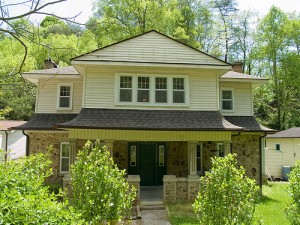Economical Home Maintenance Tips
 Home is, for many, the one place where they can find solace and rest. But it is also a real estate asset that may be used to improve your financial position. That being said, it is pretty obvious why this is an investment that should be protected at all costs. If a home is allowed to fall into disrepair then the bill could be shockingly high when the repairman is finally summoned. There are some basic home maintenance tips that every householder should follow to avoid a financial drought after a hefty repair project.
Home is, for many, the one place where they can find solace and rest. But it is also a real estate asset that may be used to improve your financial position. That being said, it is pretty obvious why this is an investment that should be protected at all costs. If a home is allowed to fall into disrepair then the bill could be shockingly high when the repairman is finally summoned. There are some basic home maintenance tips that every householder should follow to avoid a financial drought after a hefty repair project.
Do frequent checks for mold. Mold is bad for your health. This problem usually surfaces when the walls or floor is getting wet frequently. Many home owners find that after years of living in a home they find mold growing in their basement behind boxes or some other unmoved object. It is important to inspect your home from time to time to see if mold is appearing anywhere. If mold is discovered, act immediately. If left untreated, it will rot the walls and damage the integrity of the structure.
It is not very difficult to detect mold. One of the first things that you will notice is a smell. You also notice a darkened greenish area that produces the smell. Since mold and mildew are similar in appearance it is at this point that a professional response becomes necessary. They can conduct a test to determine the toxicity of the mold and recommend treatment options.
Find and repair leaks. Leaks are usually the culprit behind mold. Sometimes plumbing problems can be behind a leak while at other times it is poor construction or worn out building material. The roof, for instance, can spring a leak and this leak can cause the growth of mold. Essentially, therefore, the preventative measure to mold is to avoid leaks.
Get the house inspected for termites. Termites usually infest a home when untreated wood is used in the structure. Termites are speedy when it comes to eating through the walls of a house. You may find yourself without a home within months if you do not tackle a termite infestation head on.
As with mold, you can do the preliminary checks for termites. These little buggers love door jambs. Check the floor around these areas for duct residue. If a case of termites gets really bad, then the walls will develop tiny holes or they will become hollow. You can identify hollow walls by using a knife or screwdriver to lift the surface of the wood and see below. These holes will grow bigger and bigger as time goes by. A coat of varnish on exposed wood surfaces helps to keep termites at bay.
Repair and replace worn out fixtures such as stair parts. Inspect and replace worn out stair treads and risers. It is easier and cheaper to replace these one at a time than to have a whole batch go bad. This can be done as a do it yourself project if the handyman’s bills are a little too high. Rely heavily on measurements and buy some construction grade adhesive to make the assembly firm. Remember to ensure that you have properly treated wood for this project. You don’t want to invite a termite infestation into your home.
Essentially, the solution to massive repair bills is meticulous and frequent inspections. And many of the inspections can be done without a professional. A professional does not need to be called in until you notice something that doesn’t look right. As with the human body, the mantra for a home is an apple a day keeps the doctor away.
Charles has been a home inspector for the last fifteen years. He specializes in detecting dangerous faults in homes and is passionate about helping householders to prevent health hazards in their homes. This is what has driven him to start writing about this topic and some times he also writes for http://www.woodstairs.com/
Related articles
- Guidelines to Renovate Home in Different Ways (savealittlemoney.com)
- How to set up a Home Office on the Cheap (savealittlemoney.com)

Category: Home Repair, Saving Money





